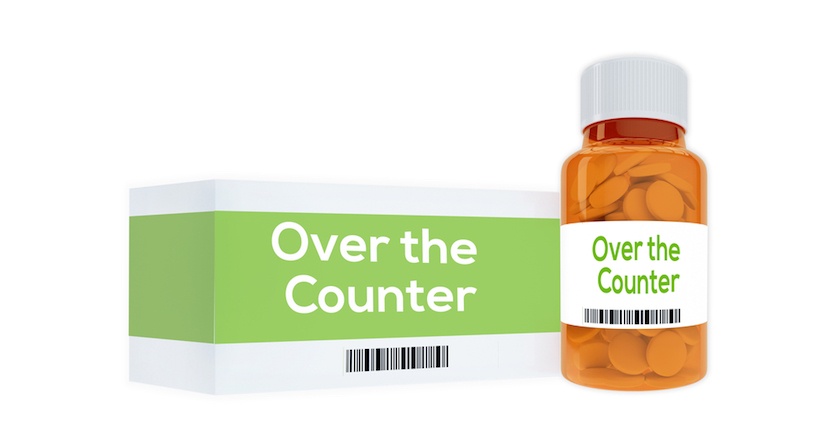



Get new exclusive access to healthcare business reports & breaking news




Pharma marketing refers to the marketing of drugs and medical devices by private and public organizations to doctors, clinicians and consumers.
With the average American spending $1,000 on drugs a year, marketing is a top priority for the major players in the pharmaceutical industry. With so much spending involved, most companies understand the great role and importance of marketing in pharma.
But what makes pharma marketing so important?
Well, marketing is now the key driving force behind shareholder value. More specifically, marketing enables pharma companies to identify, anticipate and provide solutions for customer requirements.
At the same time, marketing is not always seen as a priority for pharma CEOs which is why professional marketers are often required to take responsibility for pharma branding and for the ROI on investment.
While many people continue to view pharmaceuticals as commodities, marketers know that branding is the only way to help differentiate these companies from each other.
In this article, we take a look at pharma marketing and what enables some pharma companies to stand out from the crowd.


The global market for pharmaceuticals is $900 billion and this figure is fully expected to exceed $1,1 trillions in the next few years. In fact, recent studies show the industry is growing at a rate of 5%, which is just behind the two other major healthcare segments – medical services and equipment.
As a rule, drug affordability and disease prevalence continue to drive this rate, while government policies and regulation can impede or slow down this growth.
However, it’s clear that this demand is not likely to slow down anytime soon and online trends can also attest to this statement.
Either way, pharma is big business and one of the most in-demand and profitable industries in the world. That being said, how does one stand out or gain traction with so much competition?


For this reason, research and development will always impact the cost of a particular drug and this is also true when it comes to the costs associated with pharma marketing.
In terms of the overall spend, most companies spend more on pharma marketing as opposed to research and development.
For instance, Johnson & Johnson spent more than twice their R&D budget of $8 billion on marketing in recent years. As for the focus of these marketing efforts, pharma companies have a tendency to target physicians instead of the actual consumer.
Now, while this might seem like a lot to the naked eye, pharma marketers are able to identify more than enough reasons to justify this large number.
That is to say, relevant data and tools often indicate a much higher return on investment for pharma companies that invest in marketing as opposed to those who place less emphasis on it.
And that’s just part of the story…


While studies show that most pharma CEOs believe new products to be the driving force of revenue, professional marketers think otherwise.
The truth is, experts know that pharma marketing is more and more important as the differentiation between existing products becomes smaller.
In fact, the key to growth in the pharma space is more closely associated with understanding consumer needs as opposed to creating or improving products.
With this in mind, pharma marketers will place emphasis on identifying customer needs and finding solutions to meet these needs.
Meanwhile, CEOs can focus on deploying their time and effort elsewhere, while knowing their pharma marketers can implement effective strategies for success.


As already mentioned, the gap between the features and benefits of pharma products is becoming less pronounced over time.
When you think of it, this significantly reduces the impact of standard marketing efforts that focus on features and benefits.
What’s more, the pharma industry is now highly commoditized which means that these products have less intrinsic value which in turn means that most pharma marketing deliverables are more or less the same from one company to the next.
So how do you stand out of the crowd in pharma marketing?
The answer is simple – Analytics based marketing.
Rather than use the same “differentiators” as everyone else, savvy markets use certain drivers such as efficacy to stand out.
When changing to analytics-driven methods, most marketers find the results are far more impressive than with taking a conventional approach. In short, data is now an important element for effective marketing and measuring these results is just as important.
To this end, marketers can use analytics to measure effective marketing strategies and also to eliminate the risk of knee-jerk decision-making that might not produce a decent return on investment. In short, analytical decision-making can save both time and money for pharma companies.
Needless to say, marketers must be able to prove that these methods are working and make changes in order to improve the bottomline. As a rule, marketing analytics metrics should include many factors including sales, costs and profits.
Moral of the story: Branding is important but data analytics are needed to measure success. Also, marketing and revenue should be tied in order to produce the most desirable results.


Pharma marketers have two audiences – patients and doctors.
In terms of marketing strategy, it’s important to identify the most suitable audience and know the difference between them.
As you know, consumers have a tendency to contact their local doctor for medical solutions or at least consult these individuals before purchasing a pharma device or prescription of some kind.
Moreover, consumers are much more likely to buy with the recommendation of a doctor and this is certainly true if a certain device or prescription can be covered by insurance.
When we take a closer look at the statistics, the average doctors in America has control over $2 million of healthcare costs every year which accounts for nearly 80% of the total spending countrywide.
As a result, marketing to doctors is often more beneficial for pharma companies and different strategies are needed to address both doctors and patients.
Let’s take a quick look at the difference between these two audiences and what pharma marketers might want to consider during the process.


Marketing to doctors is all about identifying the needs of these professionals and providing well-researched solutions in a creative way through tactical media placement.
Marketing to doctors is not cheap as competition and investment is high in this $450 billion industry.
That being said, doctors hold the key to consumer sales and establishing a relationship with these professionals is a good way to communicate with a much wider audience.
Here are some of the most important factors or considerations for marketing to doctors:
Specific – Content marketing to doctors must be extremely specific to achieve results.
Placement – Tactical placement is highly important to reach individuals who might be desensitized to traditional marketing strategies.
Researched – Content Marketing must also be well researched and articulated in an appropriate manner.
Unfortunately for many companies, most methods look the same when it comes to marketing to doctors and it must be known that there is often a reason for taking a conservative approach.
However, creativity is essential in order to stand out as doctors are highly educated and most often desensitized to “savvy” marketing.


Marketing to patients is all about identifying individual needs and creating a patient experience that will provide efficient and specific value to address these same needs.
Creating this patient experience is often an online process and one that relies heavily on strong search engine optimization and user experience. After all, patients are online nowadays and the statistics back this up.
That is to say, most patients will now use search engines to find information or solutions relating to drugs, treatment, disease or other pharma issues. If companies can provide clear and efficient solutions to these search queries, this will inevitably impact sales and revenue.
For example, most patients who suffer from depression will use a search engine to find medication for this condition. Statistics show that more than 2.5 million depression-related search queries are made every month and many of these keywords are yet to be targeted by pharma companies.
With this in mind, if a pharma company creates a drug or treatment for depression, they can directly target the end-user through search engine optimization and content marketing in particular.


Marketing has changed a great deal in recent years with most pharma companies starting to recognize the need for alternative strategies.
It’s true, we live at a time in which people turn to their mobile devices for advice and price comparisons.
Surveys show that one in twenty searches on Google are also health related and it’s not just consumers that use these engines but also the doctors who prescribe them.
At the end of the day, patients and doctors are all consumers of information and pharma marketers must use known marketing strategies to build awareness and attract and convert these consumers.
But what might this look like in the pharma industry?


I like to learn by example. So let’s look at a very specific scenario.
If we were the marketers behind Doxepin, a depression drug, it would make sense to create content around this particular drug which the end user is likely to find in search engine listings. Full disclosure: we’re not affiliated with Doxepin, we’re just using them as an example in this scenario.
So how would we go about it?
We might create robust content and marketing strategies that will communicate directly with the person searching for a solution to their depression.
More specifically, we would use specific keywords, backlinking and organic marketing strategies to position this drug at the top end of search results for various depression-related queries.
Now, in case this seems a little confusing, let’s take a simplistic look at the process:
While this is a rather simple example and just one of many aspects of content marketing, you should see this investment is highly practical.
However, research is essential and choosing the right keywords, links and strategies is always just as important as any amount of implementation.
On the other hand, the effectiveness of this data and these efforts must also be measured, while certain changes will always be needed to make improvements to achieve the desired outcome.
Marketing to patients and doctors require distinct strategies but pharma marketing in general involves the same principles that you find in any other industry.
In many ways, implementing these strategies can take time due to lack of understanding and for the fact that many CEOs are still consumed by the ‘old way of thinking’.
Either way, most companies are investing more in marketing than research and development for good reason but with most companies still implementing the same strategies, taking an alternative approach to marketing is most certainly the key to successful marketing in the pharma industry.